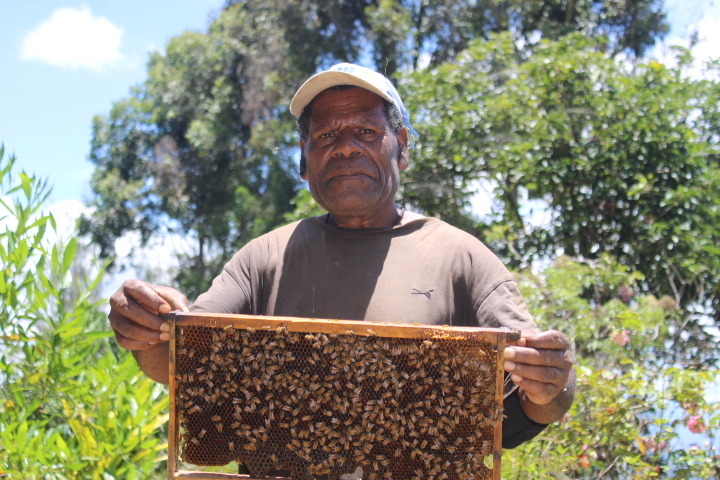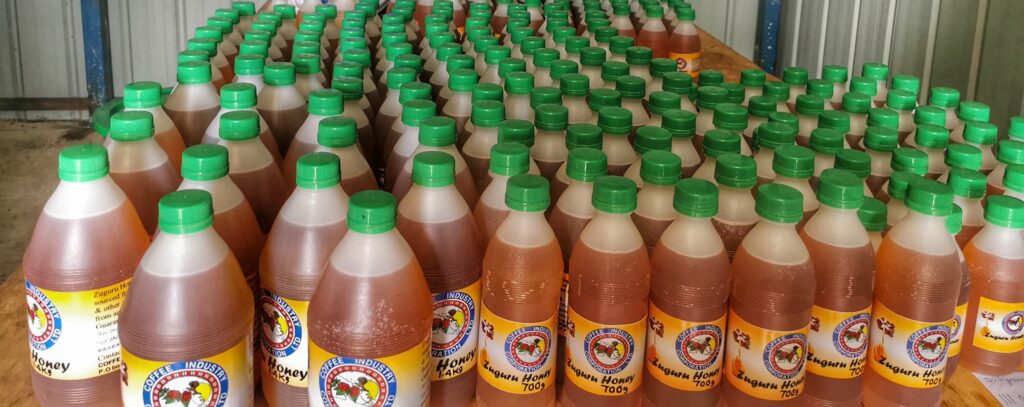Commercial Honey Farming
A local honey farmer in the Eastern Highlands Province of Papua New Guinea displaying fresh honey produced from his farm
Zuguru honey produced by Coffee Industry Corporation in the Eastern Highlands Province. Freshly packed and ready for sale.
Papua New Guineans can venture into large scale honey farming given the friendly climatic and environmental conditions we have.


Commercial honey farming, or beekeeping, involves the management of bee colonies for the production of honey and other bee products like beeswax, propolis, and royal jelly. Here’s an overview of key aspects:
1. Bee Species
– Common Species: The most widely used bee for honey production is the Western honeybee (Apis mellifera). Other species can also be utilized, but they may vary in productivity and behavior.
2. Hive Management
– Types of Hives: Langstroth hives are the most common in commercial beekeeping due to their design, which allows for easy inspection and honey extraction.
– Colony Maintenance: Regular checks are essential for monitoring the health of the colonies, ensuring adequate space, and managing swarming.
3. Pollination Services
• In addition to honey production, commercial beekeepers often provide pollination services to agriculture, enhancing crop yield. This can be a significant revenue source, especially for fruits, vegetables, and nuts.
4. Harvesting Honey
• Timing: Honey is typically harvested during late summer or early fall when the bees have capped the honeycomb cells.
• Extraction Process: Techniques include using an extractor (a centrifuge), crushing and straining, or using a honey press. Proper handling is important to maintain honey’s quality.
5. Bee Health Management
• Pests and Diseases: Beekeepers must be vigilant about threats like Varroa mites, American foulbrood, and other diseases. Regular monitoring and management practices like chemical treatments, nutritional supplements, and breeding for resistance are crucial.
6. Environmental Considerations
• Beekeepers should be conscious of their bees’ environments, as pesticides, habitat loss, and climate change can impact bee health and productivity. Planting bee-friendly flora can help support local ecosystems.
7. Marketing Honey
• Product Differentiation: Many honey producers market their honey based on floral source (e.g., clover, wildflower, and manuka) or whether it’s raw, organic, or filtered.
• Sales Channels: Honey can be sold directly to consumers at farmers’ markets, online, or through retail outlets and wholesalers.
8. Regulations and Certification
• Beekeepers must comply with local regulations regarding honey production, labeling, and food safety. Certifications like organic or fair trade can also add value to the product.
9. Sustainability Practices
• Sustainable beekeeping practices involve minimizing chemical use, fostering healthy bee populations, and focusing on long-term profitability without harming the environment.

